
Microsoft Dynamics 365 Extensions Cookbook
¥99.18
More than 80 recipes to help you leverage the various extensibility features available for Microsoft Dynamics and solve problems easily About This Book ? Customize, configure, and extend the vanilla features of Dynamics 365 to deliver bespoke CRM solutions fit for any organization ? Implement business logic using point-and-click configuration, plugins, and client-side *s with MS Dynamics 365 ? Built a DevOps pipeline as well as Integrate Dynamics 365 with Azure and other platforms Who This Book Is For This book is for developers, administrators, consultants, and power users who want to learn about best practices when extending Dynamics 365 for enterprises. You are expected to have a basic understand of the Dynamics CRM/365 platform. What You Will Learn ? Customize, configure, and extend Microsoft Dynamics 365 ? Create business process automation ? Develop client-side extensions to add features to the Dynamics 365 user interface ? Set up a security model to securely manage data with Dynamics 365 ? Develop and deploy clean code plugins to implement a wide range of custom behaviors ? Use third-party applications, tools, and patterns to integrate Dynamics 365 with other platforms ? Integrate with Azure, Java, SSIS, PowerBI, and Octopus Deploy ? Build an end-to-end DevOps pipeline for Dynamics 365 In Detail Microsoft Dynamics 365 is a powerful tool. It has many unique features that empower organisations to bridge common business challenges and technology pitfalls that would usually hinder the adoption of a CRM solution. This book sets out to enable you to harness the power of Dynamics 365 and cater to your unique circumstances. We start this book with a no-code configuration chapter and explain the schema, fields, and forms modeling techniques. We then move on to server-side and client-side custom code extensions. Next, you will see how best to integrate Dynamics 365 in a DevOps pipeline to package and deploy your extensions to the various SDLC environments. This book also covers modern libraries and integration patterns that can be used with Dynamics 365 (Angular, 3 tiers, and many others). Finally, we end by highlighting some of the powerful extensions available. Throughout we explain a range of design patterns and techniques that can be used to enhance your code quality; the aim is that you will learn to write enterprise-scale quality code. Style and approach This book takes a recipe-based approach, delivering practical examples and use cases so that you can identify the best possible approach to extend your Dynamics 365 deployment and tackle your specific business problems.
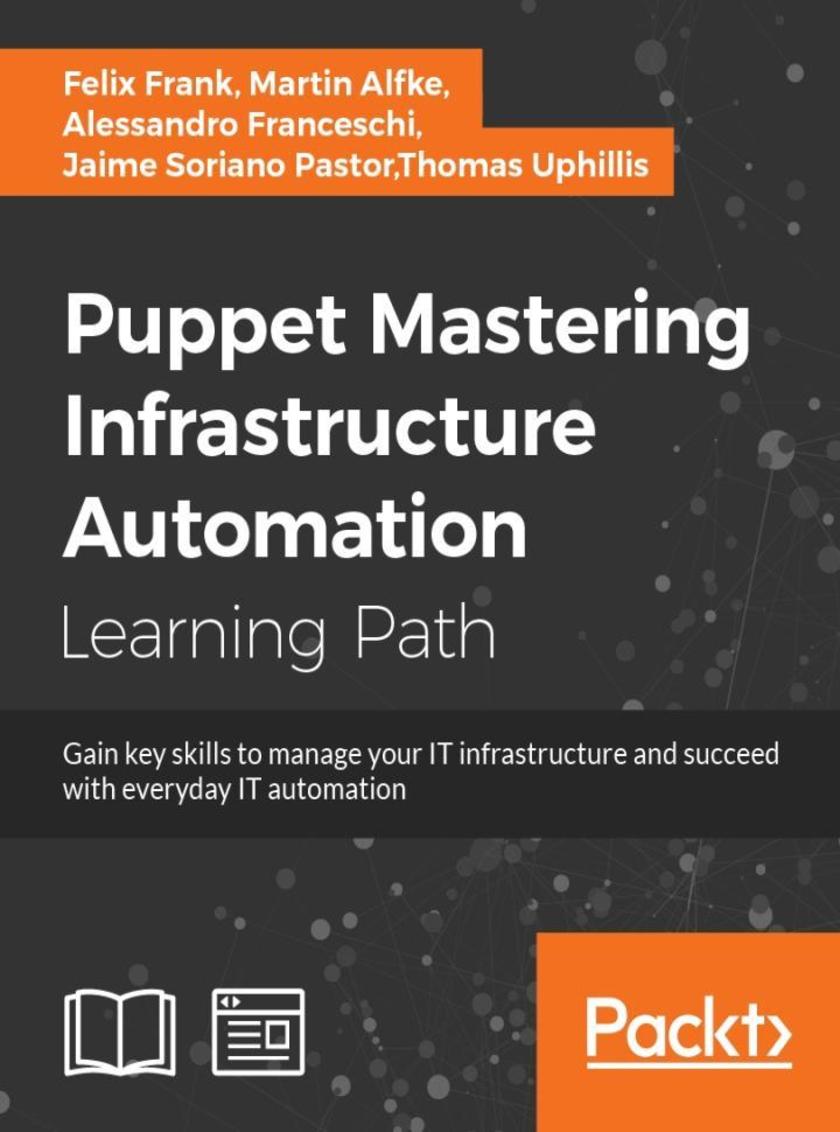
Puppet: Mastering Infrastructure Automation
¥152.59
Start pulling the strings of your IT infrastructure effectively with Puppet – learn how to configure, customize and manage your systems more intelligently in an enterprise deployment. About This Book ? Step-by-step instructions to jump start your Puppet deployment and automate your IT configurations ? Design, implement, and deploy Puppet in your infrastructure and tackle everyday IT infrastructure challenges ? Gain expert understanding of Puppet's latest and most advanced features Who This Book Is For If you're an experienced IT professional and a new Puppet user, this course will provide you with all you need to know to go from installation to advanced automation. What You Will Learn ? Write and employ individual Puppet manifests ? Understand how Puppet implements system abstraction ? Use Puppet to manage network, cloud, and virtualization devices ? Manage and test the Puppet code workflow ? Tweak, hack, and adapt the Puppet extension points ? Use exported resources to orchestrate change between machines ? Debug a puppetserver using Java techniques In Detail Puppet is a configuration management tool that allows you to automate all your IT configurations, giving you control. It was written for and by system administrators to manage large numbers of systems efficiently and prevent configuration drifts. Puppet gives you control of what you do to each node, when you do it, and how you do it.This Learning Path will take you from the basics of Puppet to extending it and then mastering it. We will start off with a primer on Puppet, its installation and get a sneak peek under its hood. We will then move on to designing and deploying your Puppet architecture, learning best practices for writing reusable and maintainable code, and executing, testing, and deploying Puppet across your systems. Finally, we will deal with problems of scale and exceptions in your code, automate workflows, and support multiple developers working simultaneously.This course is based on the following books: 1. Puppet 4 Essentials - Second Edition 2. Extending Puppet - Second Edition 3. Mastering Puppet - Second Edition Style and approach This learning path follows a practical approach, starting from the basic commands to advanced aspects. Through a series of examples you will learn the most important skills essential to manage your IT infrastructure effectively.

Penetration Testing Bootcamp
¥80.65
Sharpen your pentesting skill in a bootcamp About This Book ? Get practical demonstrations with in-depth explanations of complex security-related problems ? Familiarize yourself with the most common web vulnerabilities ? Get step-by-step guidance on managing testing results and reporting Who This Book Is For This book is for IT security enthusiasts and administrators who want to understand penetration testing quickly. What You Will Learn ? Perform different attacks such as MiTM, and bypassing SSL encryption ? Crack passwords and wireless network keys with brute-forcing and wordlists ? Test web applications for vulnerabilities ? Use the Metasploit Framework to launch exploits and write your own Metasploit modules ? Recover lost files, investigate successful hacks, and discover hidden data ? Write organized and effective penetration testing reports In Detail Penetration Testing Bootcamp delivers practical, learning modules in manageable chunks. Each chapter is delivered in a day, and each day builds your competency in Penetration Testing. This book will begin by taking you through the basics and show you how to set up and maintain the C&C Server. You will also understand how to scan for vulnerabilities and Metasploit, learn how to setup connectivity to a C&C server and maintain that connectivity for your intelligence gathering as well as offsite processing. Using TCPDump filters, you will gain understanding of the sniffing and spoofing traffic. This book will also teach you the importance of clearing up the tracks you leave behind after the penetration test and will show you how to build a report from all the data obtained from the penetration test. In totality, this book will equip you with instructions through rigorous tasks, practical callouts, and assignments to reinforce your understanding of penetration testing. Style and approach This book is delivered in the form of a 10-day boot camp style book. The day-by-day approach will help you get to know everything about penetration testing, from the use of network reconnaissance tools, to the writing of custom zero-day buffer overflow exploits.
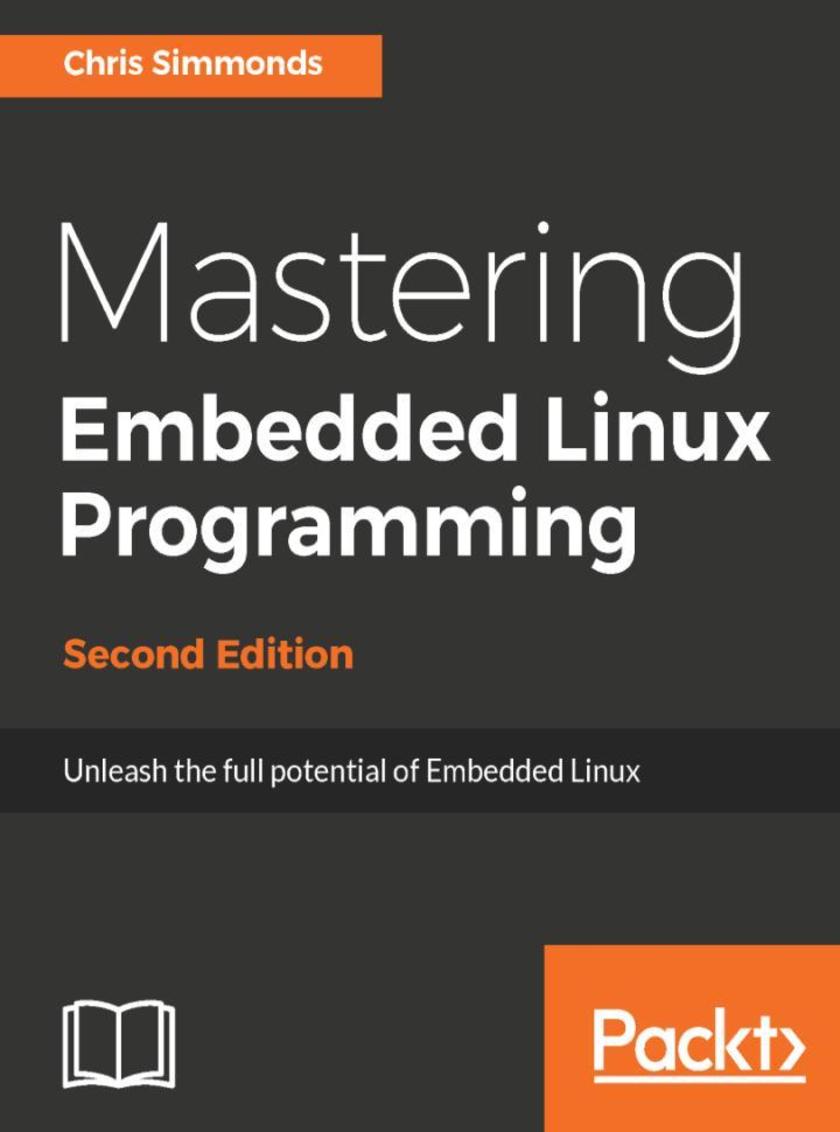
Mastering Embedded Linux Programming - Second Edition
¥90.46
Master the techniques needed to build great, efficient embedded devices on Linux About This Book ? Discover how to build and configure reliable embedded Linux devices ? This book has been updated to include Linux 4.9 and Yocto Project 2.2 (Morty) ? This comprehensive guide covers the remote update of devices in the field and power management Who This Book Is For If you are an engineer who wishes to understand and use Linux in embedded devices, this book is for you. It is also for Linux developers and system programmers who are familiar with embedded systems and want to learn and program the best in class devices. It is appropriate for students studying embedded techniques, for developers implementing embedded Linux devices, and engineers supporting existing Linux devices. What You Will Learn ? Evaluate the Board Support Packages offered by most manufacturers of a system on chip or embedded module ? Use Buildroot and the Yocto Project to create embedded Linux systems quickly and efficiently ? Update IoT devices in the field without compromising security ? Reduce the power budget of devices to make batteries last longer ? Interact with the hardware without having to write kernel device drivers ? Debug devices remotely using GDB, and see how to measure the performance of the systems using powerful tools such as perk, ftrace, and valgrind ? Find out how to configure Linux as a real-time operating system In Detail Embedded Linux runs many of the devices we use every day, from smart TVs to WiFi routers, test equipment to industrial controllers - all of them have Linux at their heart. Linux is a core technology in the implementation of the inter-connected world of the Internet of Things. The comprehensive guide shows you the technologies and techniques required to build Linux into embedded systems. You will begin by learning about the fundamental elements that underpin all embedded Linux projects: the toolchain, the bootloader, the kernel, and the root filesystem. You’ll see how to create each of these elements from scratch, and how to automate the process using Buildroot and the Yocto Project. Moving on, you’ll find out how to implement an effective storage strategy for flash memory chips, and how to install updates to the device remotely once it is deployed. You’ll also get to know the key aspects of writing code for embedded Linux, such as how to access hardware from applications, the implications of writing multi-threaded code, and techniques to manage memory in an efficient way. The final chapters show you how to debug your code, both in applications and in the Linux kernel, and how to profile the system so that you can look out for performance bottlenecks. By the end of the book, you will have a complete overview of the steps required to create a successful embedded Linux system. Style and approach This book is an easy-to-follow and pragmatic guide with in-depth analysis of the implementation of embedded devices. It follows the life cycle of a project from inception through to completion, at each stage giving both the theory that underlies the topic and practical step-by-step walkthroughs of an example implementation.
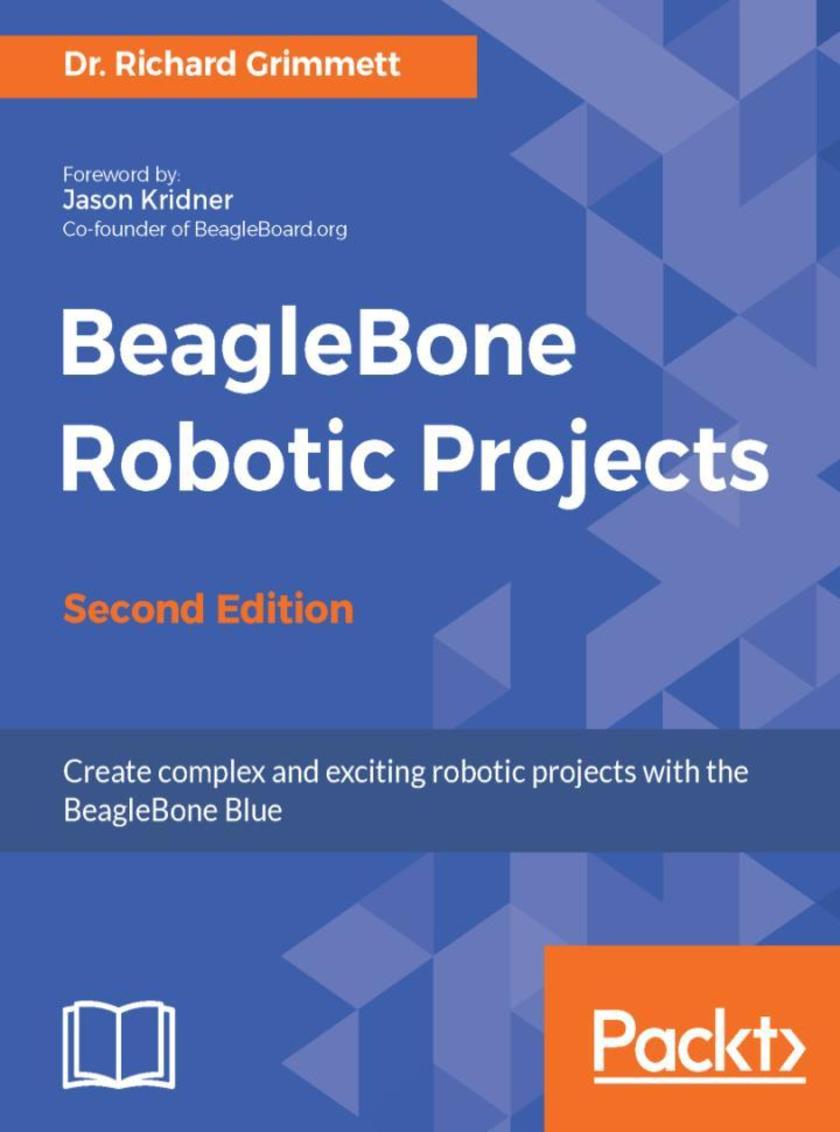
BeagleBone Robotic Projects - Second Edition
¥71.93
Exciting new capabilities to enable even easier DIY robotics with BeagleBone Blue About This Book ? Build powerful robots with the all new BeagleBone Blue ? Communicate with your robot and teach it to detect and respond to its environment ? Control walking, rolling, swimming, and flying robots with your iOS and Android mobile devices Who This Book Is For This book is for anyone who is curious about using new, low-cost hardware to create robotic projects and have previously been the domain of research labs, major universities, or defence departments. Some programming experience would be useful, but if you know how to use a personal computer, you can use this book to construct far more complex systems than you would have thought possible. What You Will Learn ? Power on and configure the BeagleBone Blue ? Get to know Simple programming techniques to enable the unique hardware capabilities of the BeagleBone Blue. ? Connect standard hardware to enable your projects to see, speak, hear, and move ? Build advanced capabilities into your projects, such as GPS and sonar sensors ? Build complex projects that can fly, or go under or on the water In Detail BeagleBone Blue is effectively a small, light, cheap computer in a similar vein to Raspberry Pi and Arduino. It has all of the extensibility of today’s desktop machines, but without the bulk, expense, or noise. This project guide provides step-by-step instructions that enable anyone to use this new, low-cost platform in some fascinating robotics projects. By the time you are finished, your projects will be able to see, speak, listen, detect their surroundings, and move in a variety of amazing ways. The book begins with unpacking and powering up the components. This includes guidance on what to purchase and how to connect it all successfully, and a primer on programming the BeagleBone Blue. You will add additional software functionality available from the open source community, including making the system see using a webcam, hear using a microphone, and speak using a speaker. You will then learn to use the new hardware capability of the BeagleBone Blue to make your robots move, as well as discover how to add sonar sensors to avoid or find objects. Later, you will learn to remotely control your robot through iOS and Android devices. At the end of this book, you will see how to integrate all of these functionalities to work together, before developing the most impressive robotics projects: Drone and Submarine. Style and approach Develop practical example projects with detailed explanations, combine the projects in a vast number of ways to create different robot designs, or work through them in sequence to discover the full capability of the BeagleBone Blue.
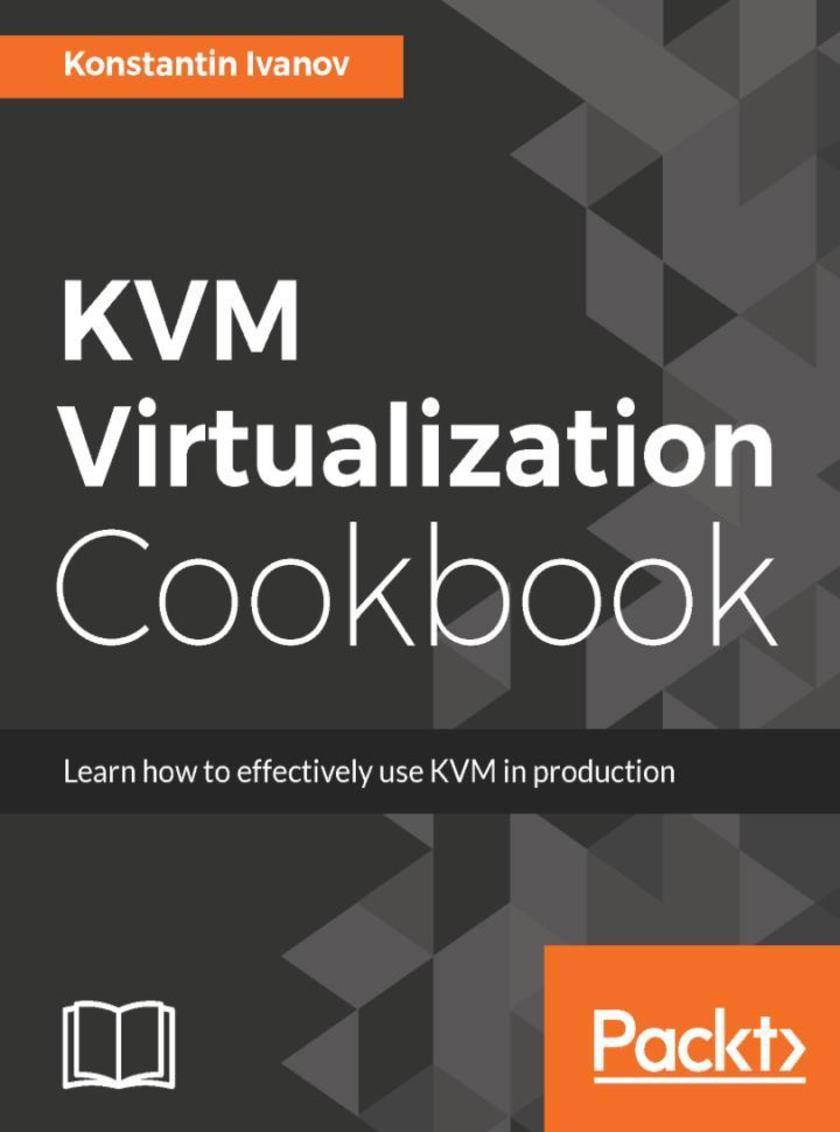
KVM Virtualization Cookbook
¥80.65
Deploy, manage, and scale virtual instances using Kernel-based Virtual Machines About This Book ? Build, manage and scale virtual machines with practical step-by-step examples ? Leverage the libvirt user-space tools and libraries to manage the life-cycle of KVM instances ? Deploy and scale applications inside KVM virtual machines with OpenStack Who This Book Is For If you are a system administrator working KVM virtualization, this book will help you grow on your expertise of working with the infrastructure to manage things in a better way. You should have a knowledge of working with Linux based systems. What You Will Learn ? Deploy different workloads in isolation with KVM virtualization and better utilize the available compute resources ? Explore the benefits of running applications with KVM and learn to prevent the “bad-neighbor” effect ? Leveraging various networking technologies in the context of virtualization with Open vSwitch and the Linux bridge. ? Create KVM instances using Python and inspect running KVM instances ? Understand Kernel Tuning for enhanced KVM performance and better memory utilization In Detail Virtualization technologies such as KVM allow for better control over the available server resources, by deploying multiple virtual instances on the same physical host, or clusters of compute resources. With KVM it is possible to run various workloads in isolation with the hypervisor layer providing better tenant isolation and higher degree of security. This book will provide a deep dive into deploying KVM virtual machines using qemu and libvirt and will demonstrate practical examples on how to run, scale, monitor, migrate and backup such instances. You will also discover real production ready recipes on deploying KVM instances with OpenStack and how to programatically manage the life cycle of KVM virtual machines using Python. You will learn numerous tips and techniques which will help you deploy & plan the KVM infrastructure. Next, you will be introduced to the working of libvirt libraries and the iPython development environment. Finally, you will be able to tune your Linux kernel for high throughput and better performance. By the end of this book, you will gain all the knowledge needed to be an expert in working with the KVM virtualization infrastructure. Style and approach This book takes a complete practical approach with many step-by-step example recipes on how to use KVM in production. The book assumes certain level of expertise with Linux systems and virtualization in general. Some knowledge of Python programming is encouraged, to fully take advantage of the code recipes.
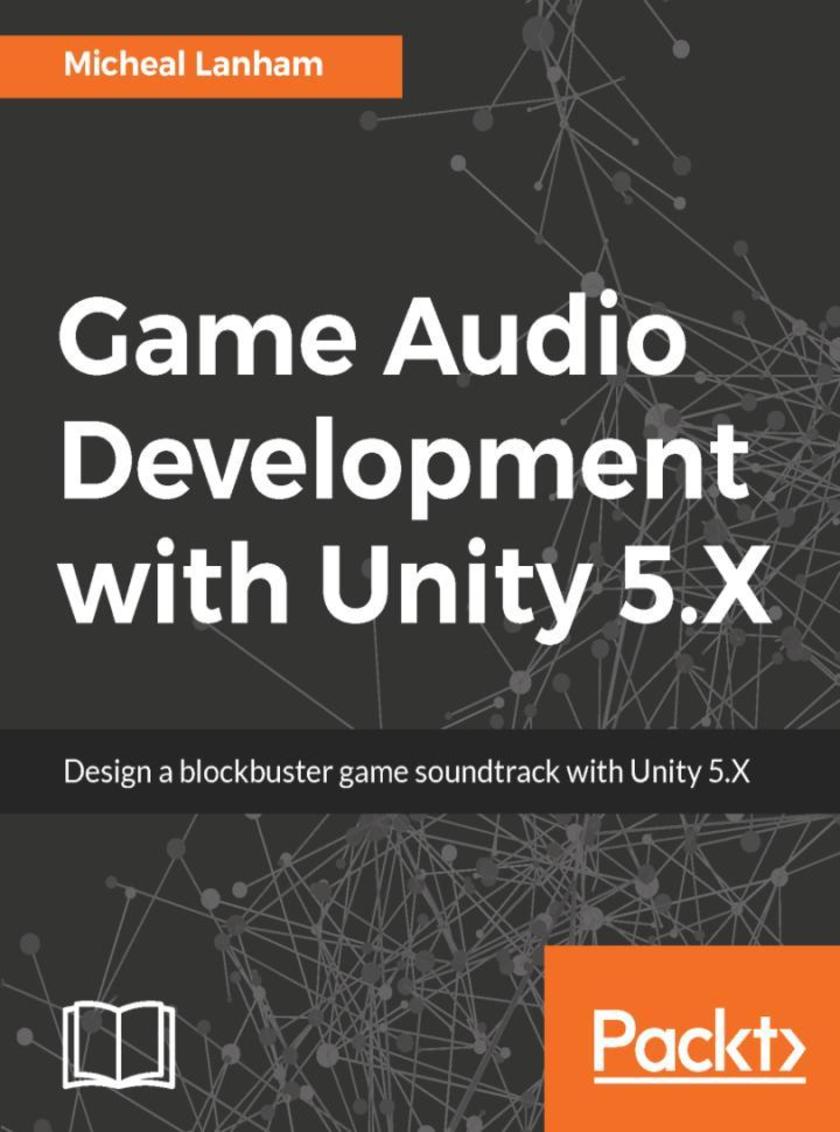
Game Audio Development with Unity 5.X
¥80.65
Create ‘AAA’ quality game audio with new features and tools built for Unity About This Book ? Explore the basics of audio development in Unity to create spatial sound, mixing, effects, composition, adaptive audio and more. ? Leverage the Audio Mixer of Unity 5.x to create blockbuster sound and music for your game. ? Learn about developing professional audio for games with FMOD Studio and composing original music with Reaper. ? Build amazing audio synchronized graphic visualizations with Unity. ? Understand how real-time character lip syncing can be implemented. Who This Book Is For The ideal target audience for this book will be game developers, both Indie as well as semi pro. No prior knowledge of Unity and audio development is assumed, What You Will Learn ? Develop game audio and other audio effects with Unity ? Getting familiar with the new Audio Mixer introduced in Unity 5 ? Implement dynamic and adaptive audio using various tools and strategies ? Explore interesting ways to incorporate audio into a game with sound visualization ? Use 3rd party professional audio development tools like FMOD ? Compose original music and record vocals ? Understand and troubleshoot audio performance issues In Detail Game Audio is one of the key components in making a game successful and it is quite popular in the gaming industry. So if you are a game developer with an eye on capturing the gamer market then this book is the right solution for you. In this book, we will take you through a step by step journey which will teach you to implement original and engaging soundtracks and SFX with Unity 5.x. You will be firstly introduced to the basics of game audio and sound development in Unity. After going through the core topics of audio development: audio sources, spatial sound, mixing, effects, and more; you will then have the option of delving deeper into more advanced topics like dynamic and adaptive audio. You will also learn to develop dynamic and adaptive audio using the Unity Audio Mixer. Further, you will learn how professional third party tools like FMOD are used for audio development in Unity. You will then go through the creation of sound visualization techniques and creating your own original music using the simple yet powerful audio workstation Reaper. Lastly, you will go through tips, techniques and strategies to help you optimize game audio performance or troubleshoot issues. At the end of the book, you’ll have gained the skills to implement professional sound and music. Along with a good base knowledge audio and music principles you can apply across a range of other game development tools. Style and approach This book will have a step by step practical approach where downloadable free games will be given with the book and readers will be free to work with them.
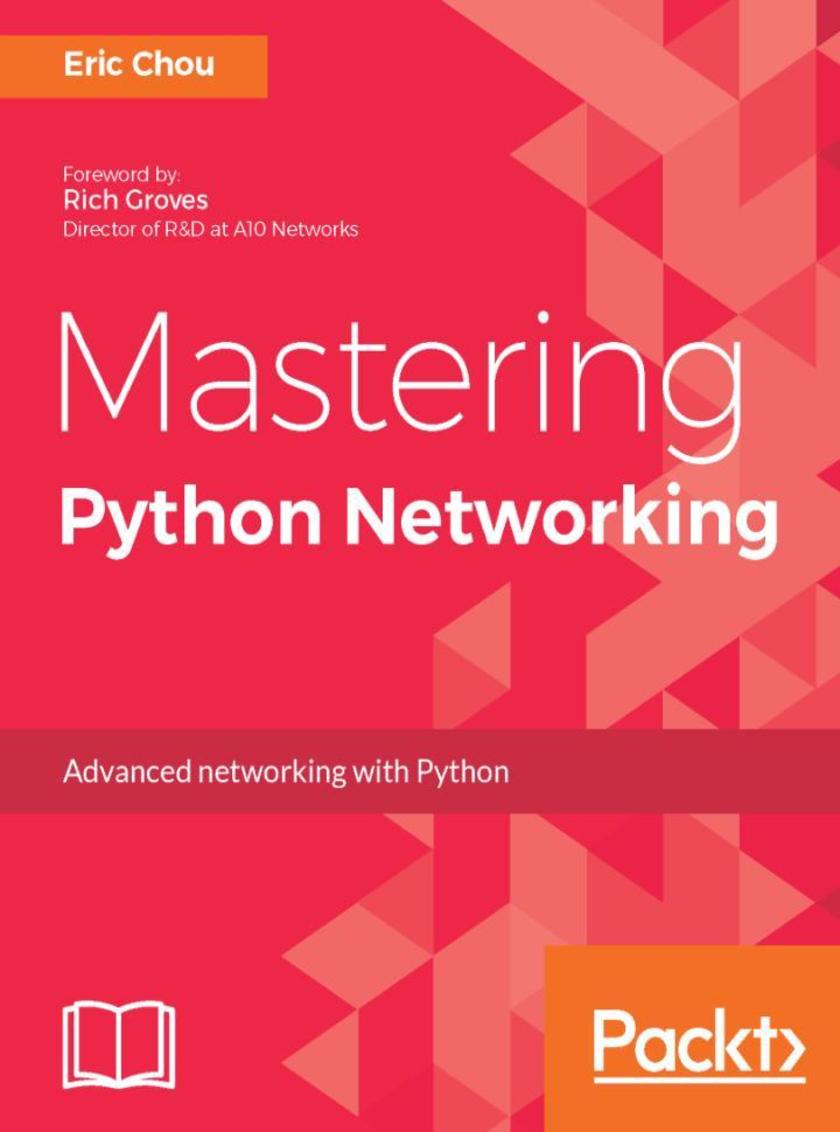
Mastering Python Networking
¥90.46
Become an expert in implementing advanced, network-related tasks with Python. About This Book ? Build the skills to perform all networking tasks using Python with ease ? Use Python for network device automation, DevOps, and software-defined networking ? Get practical guidance to networking with Python Who This Book Is For If you are a network engineer or a programmer who wants to use Python for networking, then this book is for you. A basic familiarity with networking-related concepts such as TCP/IP and a familiarity with Python programming will be useful. What You Will Learn ? Review all the fundamentals of Python and the TCP/IP suite ? Use Python to execute commands when the device does not support the API or programmatic interaction with the device ? Implement automation techniques by integrating Python with Cisco, Juniper, and Arista eAPI ? Integrate Ansible using Python to control Cisco, Juniper, and Arista networks ? Achieve network security with Python ? Build Flask-based web-service APIs with Python ? Construct a Python-based migration plan from a legacy to scalable SDN-based network. In Detail This book begins with a review of the TCP/ IP protocol suite and a refresher of the core elements of the Python language. Next, you will start using Python and supported libraries to automate network tasks from the current major network vendors. We will look at automating traditional network devices based on the command-line interface, as well as newer devices with API support, with hands-on labs. We will then learn the concepts and practical use cases of the Ansible framework in order to achieve your network goals. We will then move on to using Python for DevOps, starting with using open source tools to test, secure, and analyze your network. Then, we will focus on network monitoring and visualization. We will learn how to retrieve network information using a polling mechanism, ?ow-based monitoring, and visualizing the data programmatically. Next, we will learn how to use the Python framework to build your own customized network web services. In the last module, you will use Python for SDN, where you will use a Python-based controller with OpenFlow in a hands-on lab to learn its concepts and applications. We will compare and contrast OpenFlow, OpenStack, OpenDaylight, and NFV. Finally, you will use everything you’ve learned in the book to construct a migration plan to go from a legacy to a scalable SDN-based network. Style and approach An easy-to-follow guide packed with hands-on examples of using Python for network device automation, DevOps, and SDN.
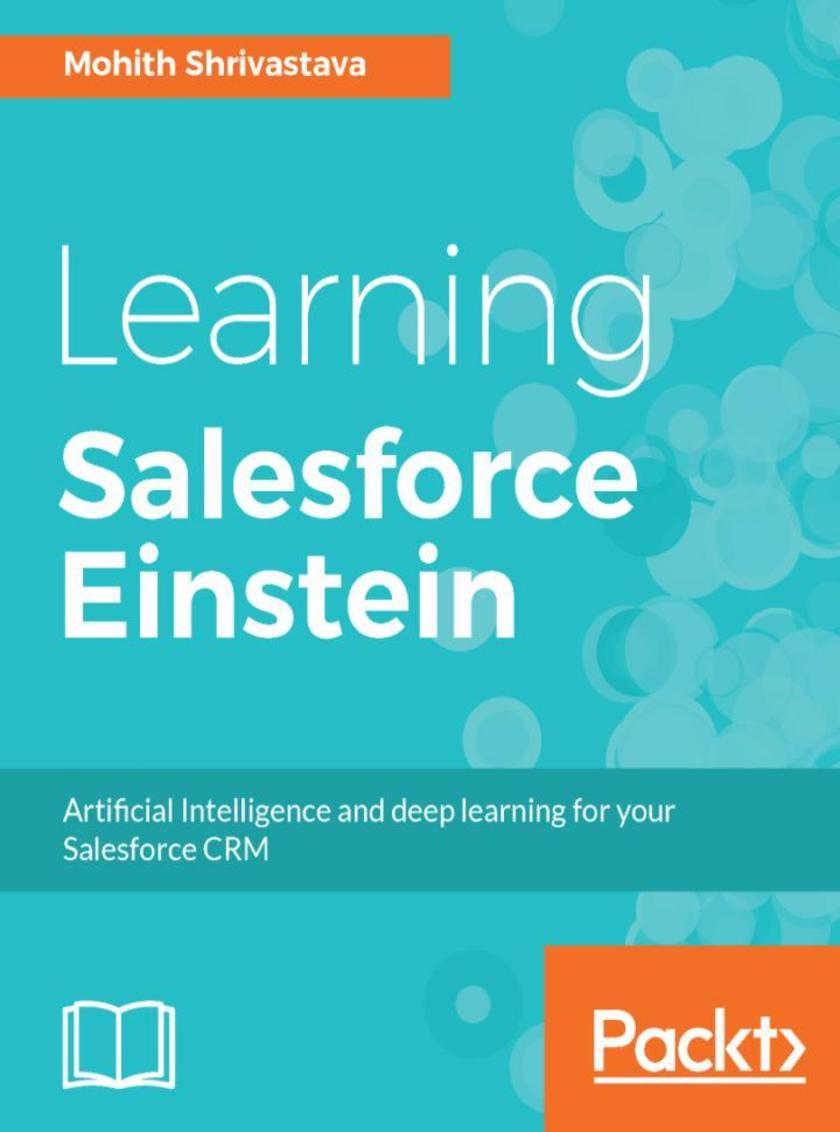
Learning Salesforce Einstein
¥99.18
Incorporate the power of Einstein in your Salesforce application About This Book ? Make better predictions of your business processes using prediction and predictive modeling ? Build your own custom models by leveraging PredictionIO on the Heroku platform ? Integrate Einstein into various cloud services to predict sales, marketing leads, insights into news feeds, and more Who This Book Is For This book is for developers, data scientists, and Salesforce-experienced consultants who want to explore Salesforce Einstein and its current offerings. It assumes some prior experience with the Salesforce platform. What You Will Learn ? Get introduced to AI and its role in CRM and cloud applications ? Understand how Einstein works for the sales, service, marketing, community, and commerce clouds ? Gain a deep understanding of how to use Einstein for the analytics cloud ? Build predictive apps on Heroku using PredictionIO, and work with Einstein Predictive Vision Services ? Incorporate Einstein in the IoT cloud ? Test the accuracy of Einstein through Salesforce reporting and Wave analytics In Detail Dreamforce 16 brought forth the latest addition to the Salesforce platform: an AI tool named Einstein. Einstein promises to provide users of all Salesforce applications with a powerful platform to help them gain deep insights into the data they work on. This book will introduce you to Einstein and help you integrate it into your respective business applications based on the Salesforce platform. We start off with an introduction to AI, then move on to look at how AI can make your CRM and apps smarter. Next, we discuss various out-of-the-box components added to sales, service, marketing, and community clouds from salesforce to add Artificial Intelligence capabilities. Further on, we teach you how to use Heroku, PredictionIO, and the force.com platform, along with Einstein, to build smarter apps. The core chapters focus on developer content and introduce PredictionIO and Salesforce Einstein Vision Services. We explore Einstein Predictive Vision Services, along with analytics cloud, the Einstein Data Discovery product, and IOT core concepts. Throughout the book, we also focus on how Einstein can be integrated into CRM and various clouds such as sales, services, marketing, and communities. By the end of the book, you will be able to embrace and leverage the power of Einstein, incorporating its functions to gain more knowledge. Salesforce developers will be introduced to the world of AI, while data scientists will gain insights into Salesforce’s various cloud offerings and how they can use Einstein’s capabilities and enhance applications. Style and approach This book takes a straightforward approach to explain Salesforce Einstein and all of its potential applications. Filled with examples, the book presents the facts along with seasoned advice and real-world use cases to ensure you have all the resources you need to incorporate the power of Einstein in your work.
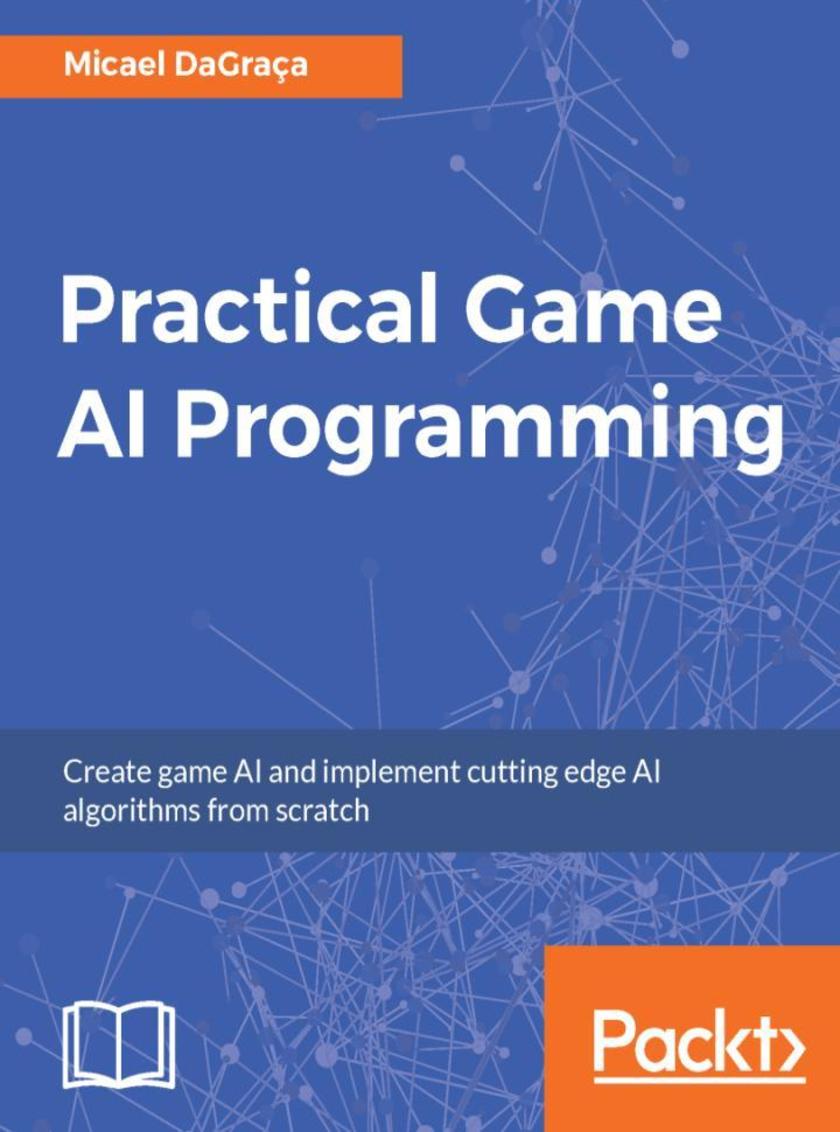
Practical Game AI Programming
¥90.46
Jump into the world of Game AI development About This Book ? Move beyond using libraries to create smart game AI, and create your own AI projects from scratch ? Implement the latest algorithms for AI development and in-game interaction ? Customize your existing game AI and make it better and more efficient to improve your overall game performance Who This Book Is For This book is for game developers with a basic knowledge of game development techniques and some basic programming techniques in C# or C++. What You Will Learn ? Get to know the basics of how to create different AI for different type of games ? Know what to do when something interferes with the AI choices and how the AI should behave if that happens ? Plan the interaction between the AI character and the environment using Smart Zones or Triggering Events ? Use animations correctly, blending one animation into another and rather than stopping one animation and starting another ? Calculate the best options for the AI to move using Pruning Strategies, Wall Distances, Map Preprocess Implementation, and Forced Neighbours ? Create Theta algorithms to the AI to find short and realistic looking paths ? Add many characters into the same scene and make them behave like a realistic crowd In Detail The book starts with the basics examples of AI for different game genres and directly jumps into defining the probabilities and possibilities of the AI character to determine character movement. Next, you’ll learn how AI characters should behave within the environment created. Moving on, you’ll explore how to work with animations. You’ll also plan and create pruning strategies, and create Theta algorithms to find short and realistic looking game paths. Next, you’ll learn how the AI should behave when there is a lot of characters in the same scene. You'll explore which methods and algorithms, such as possibility maps, Forward Chaining Plan, Rete Algorithm, Pruning Strategies, Wall Distances, and Map Preprocess Implementation should be used on different occasions. You’ll discover how to overcome some limitations, and how to deliver a better experience to the player. By the end of the book, you think differently about AI. Style and approach The book has a step-by-step tutorial style approach. The algorithms are explained by implementing them in #.

Go Cookbook
¥80.65
Bridge the gap between basic understanding of Go and use of its advanced features About This Book ? Discover a number of recipes and approaches to develop modern back-end applications ? Put to use the best practices to combine the recipes for sophisticated parallel tools ? This book is based on Go 1.8, which is the latest version Who This Book Is For This book is for web developers, programmers, and enterprise developers. Basic knowledge of the Go language is assumed. Experience with back-end application development is not necessary, but may help understand the motivation behind some of the recipes. What You Will Learn ? Test your application using advanced testing methodologies ? Develop an awareness of application structures, interface design, and tooling ? Create strategies for third-party packages, dependencies, and vendoring ? Get to know tricks on treating data such as collections ? Handle errors and cleanly pass them along to calling functions ? Wrap dependencies in interfaces for ease of portability and testing ? Explore reactive programming design patterns in Go In Detail Go (a.k.a. Golang) is a statically-typed programming language first developed at Google. It is derived from C with additional features such as garbage collection, type safety, dynamic-typing capabilities, additional built-in types, and a large standard library. This book takes off where basic tutorials on the language leave off. You can immediately put into practice some of the more advanced concepts and libraries offered by the language while avoiding some of the common mistakes for new Go developers. The book covers basic type and error handling. It explores applications that interact with users, such as websites, command-line tools, or via the file system. It demonstrates how to handle advanced topics such as parallelism, distributed systems, and performance tuning. Lastly, it finishes with reactive and serverless programming in Go. Style and approach This guide is a handy reference for developers to quickly look up Go development patterns. It is a companion to other resources and a reference that will be useful long after reading it through the first time. Each recipe includes working, simple, and tested code that can be used as a reference or foundation for your own applications.

Introduction to JVM Languages
¥80.65
Explore the Java Virtual Machine with modern programming languages About This Book ? This guide provides in-depth coverage of the Java Virtual Machine and its features ? Filled with practical examples, this book will help you understand the core concepts of Java, Scala, Clojure, Kotlin, and Groovy ? Work with various programming paradigms and gain knowledge about imperative, object-oriented and functional programming Who This Book Is For This book is meant for programmers who are interested in the Java Virtual Machine (JVM) and want to learn more about the most popular programming languages that can be used for JVM development. Basic practical knowledge of a modern programming language that supports object-oriented programming (JavaScript, Python, C#, VB.NET, and C++) is assumed. What You Will Learn ? Gain practical information about the Java Virtual Machine ? Understand the popular JVM languages and the Java Class Library ? Get to know about various programming paradigms such as imperative, object-oriented, and functional ? Work with common JVM tools such as Eclipse IDE, Gradle, and Maven ? Explore frameworks such as SparkJava, Vert.x, Akka and JavaFX ? Boost your knowledge about dialects of other well-known programming languages that run on the JVM, including JavaScript, Python, and Ruby In Detail Anyone who knows software development knows about the Java Virtual Machine. The Java Virtual Machine is responsible for interpreting Java byte code and translating it into actions. In the beginning, Java was the only programming language used for the JVM. But increasing complexity of the language and the remarkable performance of the JVM created an opening for a new generation of programming languages. If you want to build a strong foundation with the Java Virtual Machine and get started with popular modern programming languages, then this book is for you. The book will begin with a general introduction of the JVM and its features, which are common to the JVM languages, helping you get abreast with its concepts. It will then dive into explaining languages such as Java, Scala, Clojure, Kotlin, and Groovy and will show how to work with each language, their features, use cases, and pros and cons. By writing example projects in those languages and focusing on each language’s strong points, it will help you find the programming language that is most appropriate for your particular needs. By the end of the book, you will have written multiple programs that run on the Java Virtual Machine and know about the differences between the various languages. Style and approach This practical, example-filled guide will help you get started with the JVM and some of its most popular languages.
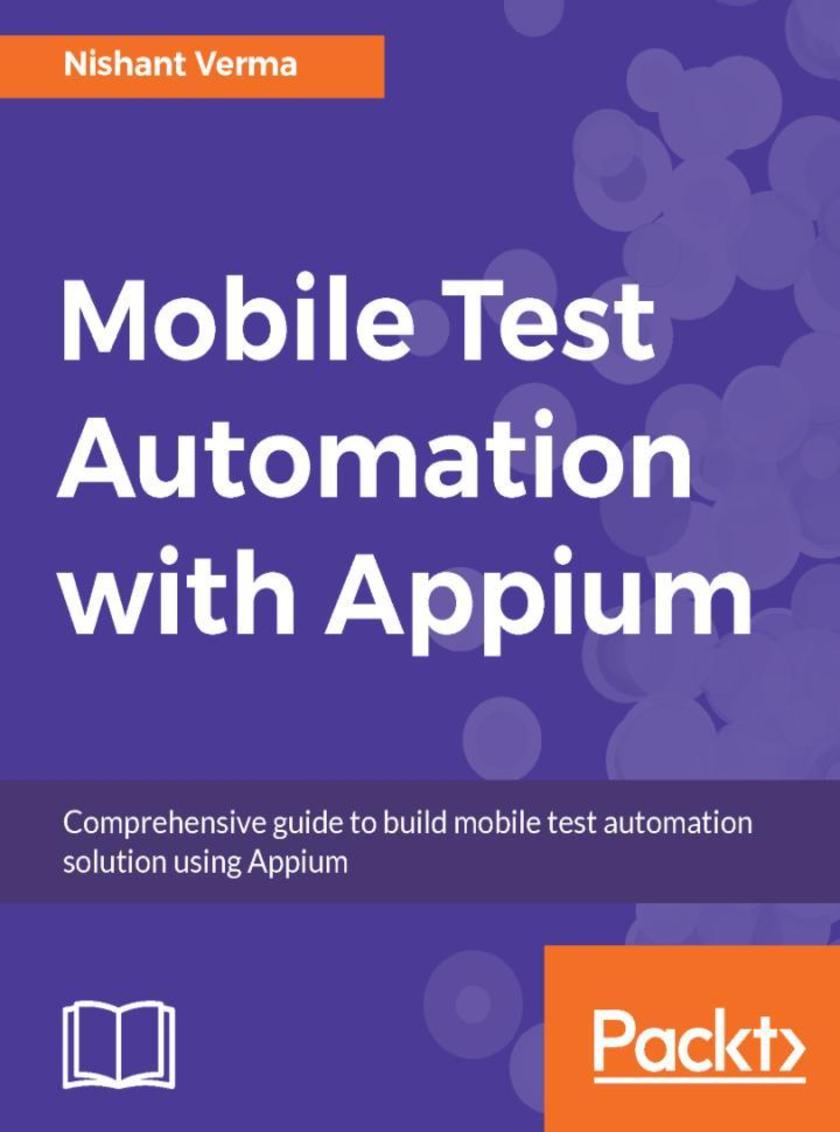
Mobile Test Automation with Appium
¥71.93
Automate your mobile app testing About This Book ? How to automate testing with Appium ? Apply techniques for creating comprehensive tests ? How to test on physical devices or emulators Who This Book Is For Are you a mobile developer or a software tester who wishes to use Appium for your test automation? If so, then this is the right book for you .You must have basic Java programming knowledge. You don’t need to have prior knowledge of Appium. What You Will Learn ? Discover Appium and how to set up an automation framework for mobile testing ? Understand desired capabilities and learn to find element locators ? Learn to automate gestures and synchronize tests using Appium ? Take an incremental approach to implement page object pattern ? Learn to run Appium tests on emulators or physical devices ? Set up Jenkins to run mobile automation tests by easy to learn steps ? Discover tips and tricks to record video of test execution, inter app automation concepts ? Learn to run Appium tests in parallel on multiple devices simultaneously In Detail Appium is an open source test automation framework for mobile applications. It allows you to test all three types of mobile applications: native, hybrid, and mobile web. It allows you to run the automated tests on actual devices, emulators, and simulators. Today, when every mobile app is made on at least two platforms, iOS and Android, you need a tool that allows you to test across platforms. Having two different frameworks for the same app increases the cost of the product and time to maintain it as well. Appium helps save this cost. With mobile app growth exploding, mobile app automation is mainstream now. In this book, author Nishant Verma provides you with a firm grounding in the concepts of Appium while diving into how to set up appium & Cucumber-jvm test automation framework, implement page object design pattern, automate gestures, test execution on emulators and physical devices, and implement continuous integration with Jenkins. The mobile app we have referenced in this book is Quikr because of its relatively lower learning curve to understand the application. It's a local classifieds shopping app. Style and approach This book takes a practical, step-by-step approach to testing and automating individual apps such as native, hybrid, and mobile web apps using different examples.
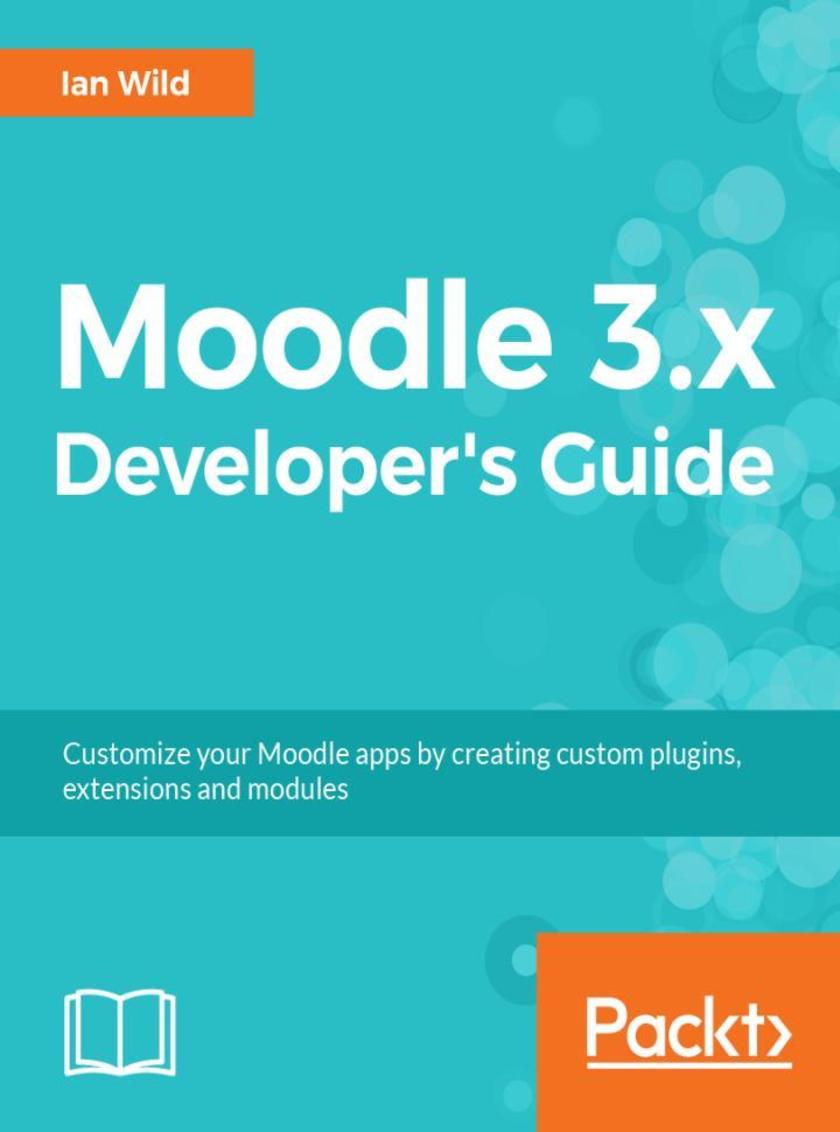
Moodle 3.x Developer's Guide
¥80.65
Effortlessly ensure your application's code quality from day 1 About This Book ? Customize your Moodle 3.x app. ? Leverage the new features of Moodle 3.x by diving deep into the Moodle development eco-system. ? Cater to heavy user traffic, customize learning requirements and create custom third party plugins. Who This Book Is For This book is for Moodle developers who are familiar with the basic Moodle functionality and have an understanding of the types of scenarios in which the Moodle platform can be usefully employed. You must have medium-level PHP programming knowledge. You should be familiar with HTML and XML protocols. You do not need to have prior knowledge of Moodle-specific terminology What You Will Learn ? Work with the different types of custom modules that can be written for Moodle 3.x ? Understand how to author custom modules so they conform to the agreed Moodle 3.x development guidelines ? Get familiar with the Moodle 3.x architecture—its internal and external APIs ? Customize Moodle 3.x so it can integrate seamlessly with third-party applications of any kind ? Build a new course format to specify the layout of a course ? Implement third-party graphics libraries in your plugins ? Build plugins that can be themed easily ? Provide custom APIs that will provide the means to automate Moodle 3 in real time In Detail The new and revamped Moodle is the top choice for developers to create cutting edge e-learning apps that cater to different user’s segments and are visually appealing as well. This book explains how the Moodle 3.x platform provides a framework that allows developers to create a customized e-learning solution. It begins with an exploration of the different types of plugin.. We then continue with an investigation of creating new courses. You will create a custom plugin that pulls in resources from a third-party repository. Then you’ll learn how users can be assigned to courses and granted the necessary permissions. Furthermore, you will develop a custom user home. At the end of the book, we’ll discuss the Web Services API to fully automate Moodle 3.x in real time. Style and approach This book takes a step-by-step practical approach with every step explained in great detail using practical examples. You will create custom plugins from scratch with the examples shown and create new modules as well as extensions with the examples presented.
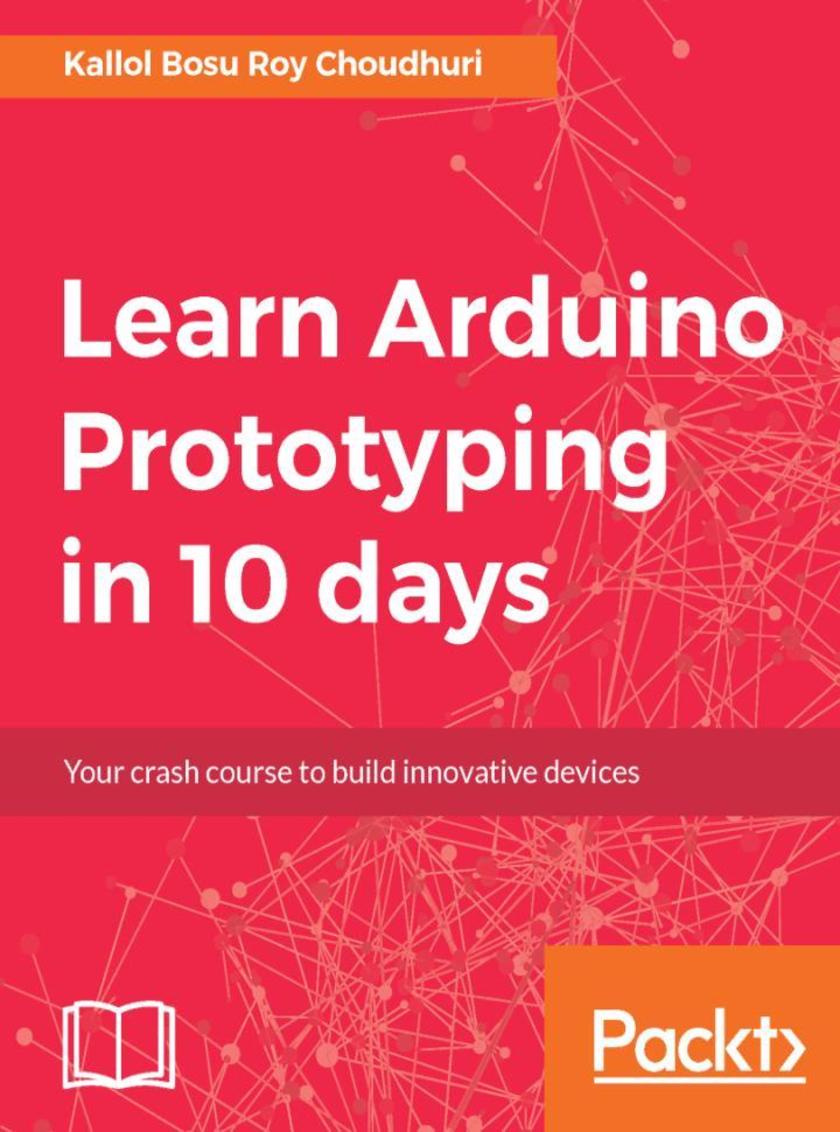
Learn Arduino Prototyping in 10 days
¥63.21
The ultimate power-packed crash course in building Arduino-based projects in just 10 days! About This Book ? A carefully designed 10-day crash course, covering major project/device types, with 20+ unique hands-on examples ? Get easy-to-understand explanations of basic electronics fundamentals and commonly used C sketch functions ? This step-by-step guide with 90+ diagrams and 50+ important tips will help you become completely self-reliant and confident Who This Book Is For This book is a beginner’s crash course for professionals, hobbyists, and students who are tech savvy, have a basic level of C programming knowledge, and basic familiarity with electronics, be it for embedded systems or the Internet of Things. What You Will Learn ? Write Arduino sketches and understand the fundamentals of building prototype circuits using basic electronic components, such as resistors, transistors, and diodes ? Build simple, compound, and standalone devices with auxiliary storage (SD card), a DC battery, and AC power supplies ? Deal with basic sensors and interface sensor modules by using sensor datasheets ? Discover the fundamental techniques of prototyping with actuators ? Build remote-controlled devices with infrared (IR), radio frequency (RF), and telephony with GSM ? Learn IoT edge device prototyping (using ESP8266) and IoT cloud configuration In Detail This book is a quick, 10-day crash course that will help you become well acquainted with the Arduino platform. The primary focus is to empower you to use the Arduino platform by applying basic fundamental principles. You will be able to apply these principles to build almost any type of physical device. The projects you will work through in this book are self-contained micro-controller projects, interfacing with single peripheral devices (such as sensors), building compound devices (multiple devices in a single setup), prototyping standalone devices (powered from independent power sources), working with actuators (such as DC motors), interfacing with an AC-powered device, wireless devices (with Infrared, Radio Frequency and GSM techniques), and finally implementing the Internet of Things (using the ESP8266 series Wi-Fi chip with an IoT cloud platform). The first half of the book focuses on fundamental techniques and building basic types of device, and the final few chapters will show you how to prototype wireless devices. By the end of this book, you will have become acquainted with the fundamental principles in a pragmatic and scientific manner. You will also be confident enough to take up new device prototyping challenges. Style and approach This step-by- step guide will serve as a quick, 10-day crash course to help you become well acquainted with the Arduino platform.
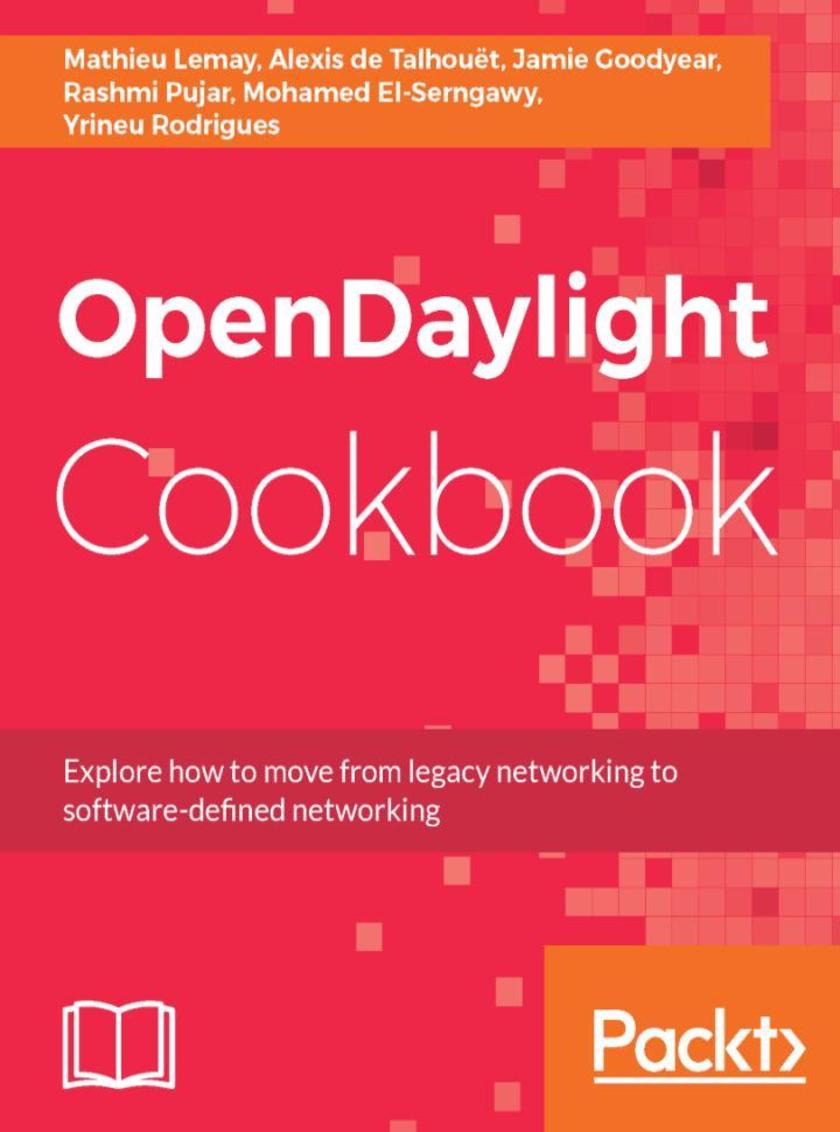
OpenDaylight Cookbook
¥80.65
Over 90 recipes to gain the critical skills needed to deploy and manage OpenDaylight-based solutions About This Book ? This book will help you to build intelligent SDN networks that save your company time, money, and resources ? From eminent authors, learn to address real-world challenges and troubleshoot day-to-day scalability and performance problems faced in OpenDayLight deployments ? This is the only book that offers you quick fixes to create your own branded OpenDaylight Who This Book Is For This book is for experienced network administrators and IT professionals who are using or deploying SDN/OpenDaylight and are looking to gain expertise in building SDN solutions for organizations. What You Will Learn ? Grasp the fundamentals of OpenDaylight ? Customize, authenticate, & authorize in OpenDaylight ? Analyse network access control and policy ? Manage datacenter optimization ? Integrate OpenDaylight with third-party frameworks ? Deploy, configure, and tune OpenDaylight-based solutions In Detail OpenDaylight is an open source platform to program and build Software-Defined Networks (SDN). Its aim is to accelerate the adoption of SDN and NFV. With above 90 practical recipes, this book will help you to solve day-to-day problems and maintenance tasks surrounding OpenDaylight’s implementation. This book starts with the OpenDaylight fundamentals. In this book, you will gain a sound understanding of the methods and techniques when deploying OpenDaylight in production environment. Later on, you will learn to create a Service Chain using SFC. This book will address common problems and day-to-day maintenance tasks with OpenDaylight. We’ll also will teach you how to interact with OpenDaylight APIs and use the necessary tools to simulate networks. You will also explore how to create your own branded OpenDaylight along with authorising and authenticating users using OpenDaylight Identity Manager. By the end of this book, you will have the necessary skills to operate an OpenDaylight SDN environment. Style and approach With a diverse range of topics, this will be a guide which will help the readers gain the necessary skills needed to deploy and operate OpenDaylight in your organisation through practical recipes.
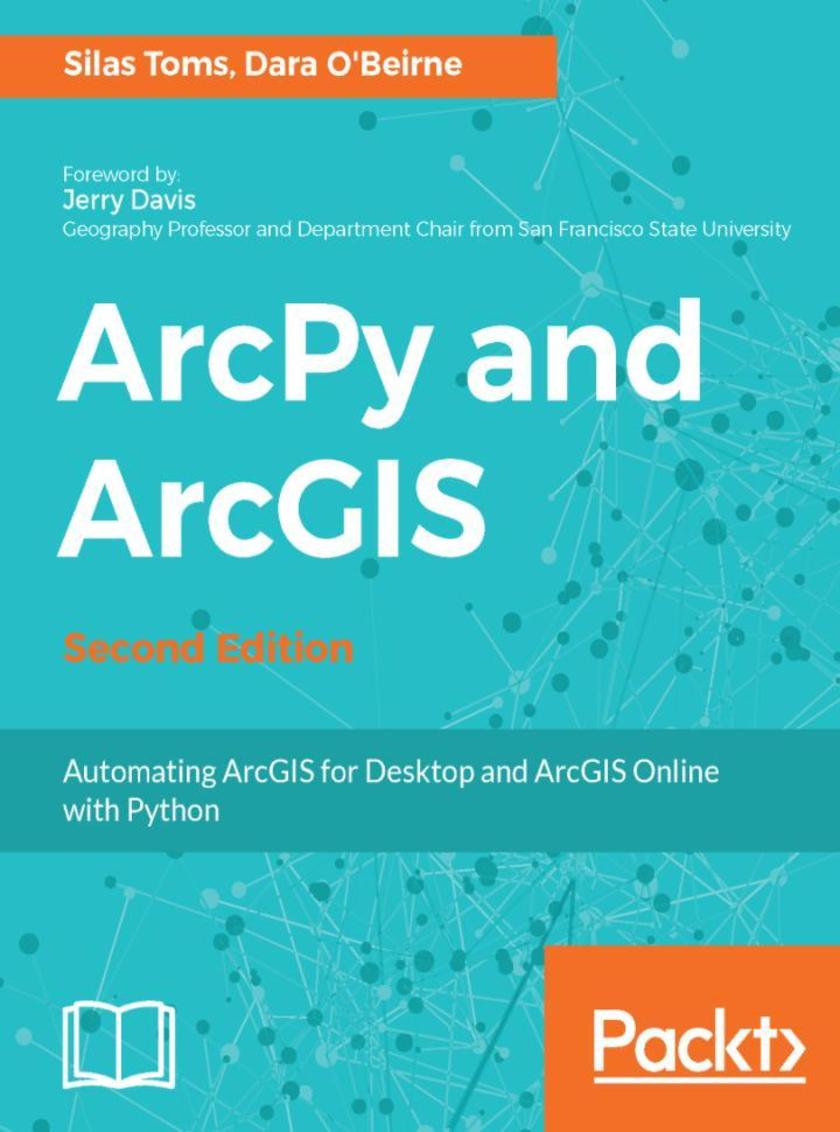
ArcPy and ArcGIS - Second Edition
¥90.46
Use Python modules such as ArcPy, ArcREST and the ArcGIS API for Python to automate the analysis and mapping of geospatial data. About This Book ? Perform GIS analysis faster by automating tasks. ? Access the spatial data contained within shapefiles and geodatabases and transform between spatial reference systems. ? Automate the mapping of geospatial analyses and production of map books. Who This Book Is For If you are a GIS student or professional who needs an understanding of how to use ArcPy to reduce repetitive tasks and perform analysis faster, this book is for you. It is also a valuable book for Python programmers who want to understand how to automate geospatial analyses and implement ArcGIS Online data management. What You Will Learn ? Understand how to integrate Python into ArcGIS and make GIS analysis faster and easier. ? Create Python * using ArcGIS ModelBuilder. ? Learn to use ArcGIS online feature services and the basics of the ArcGIS REST API ? Understand the unique Python environment that is new with ArcGIS Pro ? Learn about the new ArcGIS Python API and how to use Anaconda and Jupyter with it ? Learn to control ArcGIS Enterprise using ArcPy In Detail ArcGIS allows for complex analyses of geographic information. The ArcPy module is used to * these ArcGIS analyses, providing a productive way to perform geo-analyses and automate map production. The second edition of the book focuses on new Python tools, such as the ArcGIS API for Python. Using Python, this book will guide you from basic Python *ing to advanced ArcPy * tools. This book starts off with setting up your Python environment for ArcGIS automation. Then you will learn how to output maps using ArcPy in MXD and update feature class in a geodatabase using arcpy and ArcGIS Online. Next, you will be introduced to ArcREST library followed by examples on querying, updating and manipulating ArcGIS Online feature services. Further, you will be enabling your *s in the browser and directly interacting with ArcGIS Online using Jupyter notebook. Finally, you can learn ways to use of ArcPy to control ArcGIS Enterprise and explore topics on deployments, data quality assurances, data updates, version control, and editing safeguards. By the end of the book, you will be equipped with the knowledge required to create automated analysis with administration reducing the time-consuming nature of GIS. Style and approach The book takes a pragmatic approach, showing ways to automate repetitive tasks and utilizing features of ArcPy with ArcGIS Pro and ArcGIS online.
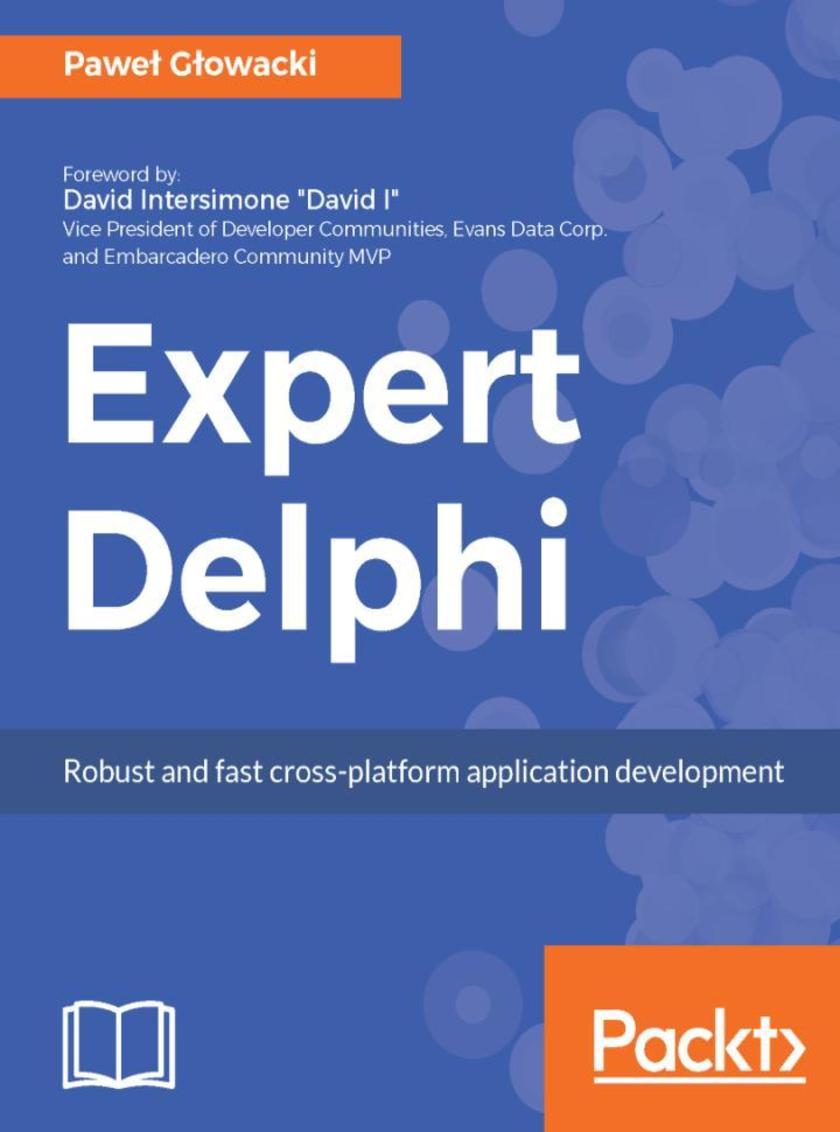
Expert Delphi
¥90.46
Become a developer superhero and build stunning cross-platform apps with Delphi About This Book ? A one-stop guide on Delphi to help you build cross-platform apps ? This book covers important concepts such as the FireMonkey library, shows you how to interact with the Internet of Things, and enables you to integrate with Cloud services ? The code is explained in detail with observations on how to create native apps for Ios and Android with a single code base Who This Book Is For If you want to create stunning applications for mobile, desktop, the cloud, and the Internet of Things, then this book is for you. This book is for developers who would like to build native cross-platform apps with a single codebase for iOS and Android. A basic knowledge of Delphi is assumed, although we do cover a primer on the language. What You Will Learn ? Understand the basics of Delphi and the FireMonkey application platform as well as the specifics of Android and iOS platforms ? Complete complex apps quickly with access to platform features and APIs using a single, easy-to-maintain code base ? Work with local data sources, including embedded SQL databases, REST servers, and Backend-as-a-Service providers ? Take full advantage of mobile hardware capabilities by working with sensors and Internet of Things gadgets and devices ? Integrate with cloud services and data using REST APIs and scalable multi-tier frameworks for outstanding multi-user and social experience ? Architect and deploy powerful mobile back-end services and get super-productive by leveraging Delphi IDE agile functionality ? Get to know the best practices for writing a high-quality, reliable, and maintainable codebase in the Delphi Object Pascal language In Detail Delphi is the most powerful Object Pascal IDE and component library for cross-platform native app development. It enables building natively compiled, blazingly fast apps for all major platforms including Android, iOS, Windows, Mac, and Linux. If you want to build server-side applications, create web services, and have clear GUIs for your project, then this book is for you. The book begins with a basic primer on Delphi helping you get accustomed to the IDE and the Object Pascal language and will then quickly move on to advanced-level concepts. Through this book, we’ll help you understand the architecture of applications and will teach you the important concepts of the FireMonkey library, show you how to build server-side services, and enable you to interact with the Internet of Things. Towards the end, you will learn to integrate your app with various web services and deploy them. By the end of the book, you will be able to build powerful, cross-platform, native apps for iOS and Android with a single code base. Style and approach This book will help you build cross-platform mobile apps with Delphi using a step-by-step approach.
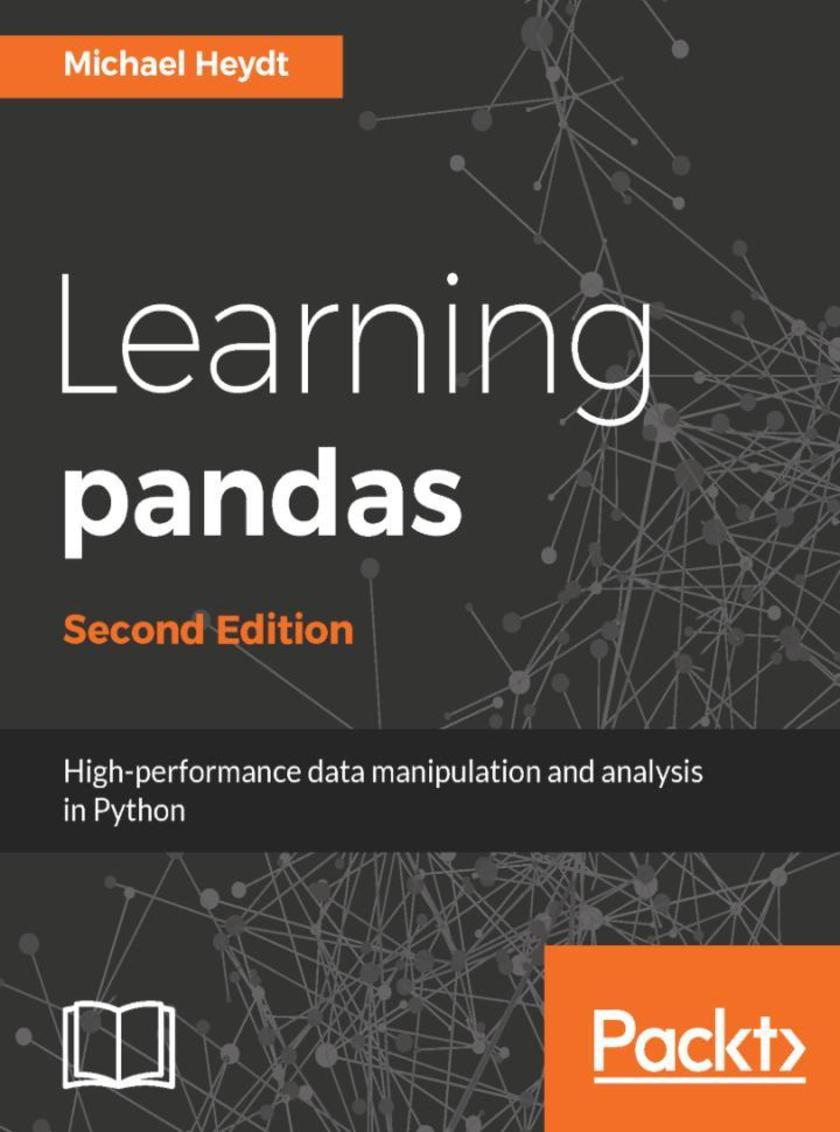
Learning pandas - Second Edition
¥90.46
Get to grips with pandas—a versatile and high-performance Python library for data manipulation, analysis, and discovery About This Book ? Get comfortable using pandas and Python as an effective data exploration and analysis tool ? Explore pandas through a framework of data analysis, with an explanation of how pandas is well suited for the various stages in a data analysis process ? A comprehensive guide to pandas with many of clear and practical examples to help you get up and using pandas Who This Book Is For This book is ideal for data scientists, data analysts, Python programmers who want to plunge into data analysis using pandas, and anyone with a curiosity about analyzing data. Some knowledge of statistics and programming will be helpful to get the most out of this book but not strictly required. Prior exposure to pandas is also not required. What You Will Learn ? Understand how data analysts and scientists think about of the processes of gathering and understanding data ? Learn how pandas can be used to support the end-to-end process of data analysis ? Use pandas Series and DataFrame objects to represent single and multivariate data ? Slicing and dicing data with pandas, as well as combining, grouping, and aggregating data from multiple sources ? How to access data from external sources such as files, databases, and web services ? Represent and manipulate time-series data and the many of the intricacies involved with this type of data ? How to visualize statistical information ? How to use pandas to solve several common data representation and analysis problems within finance In Detail You will learn how to use pandas to perform data analysis in Python. You will start with an overview of data analysis and iteratively progress from modeling data, to accessing data from remote sources, performing numeric and statistical analysis, through indexing and performing aggregate analysis, and finally to visualizing statistical data and applying pandas to finance. With the knowledge you gain from this book, you will quickly learn pandas and how it can empower you in the exciting world of data manipulation, analysis and science. Style and approach ? Step-by-step instruction on using pandas within an end-to-end framework of performing data analysis ? Practical demonstration of using Python and pandas using interactive and incremental examples
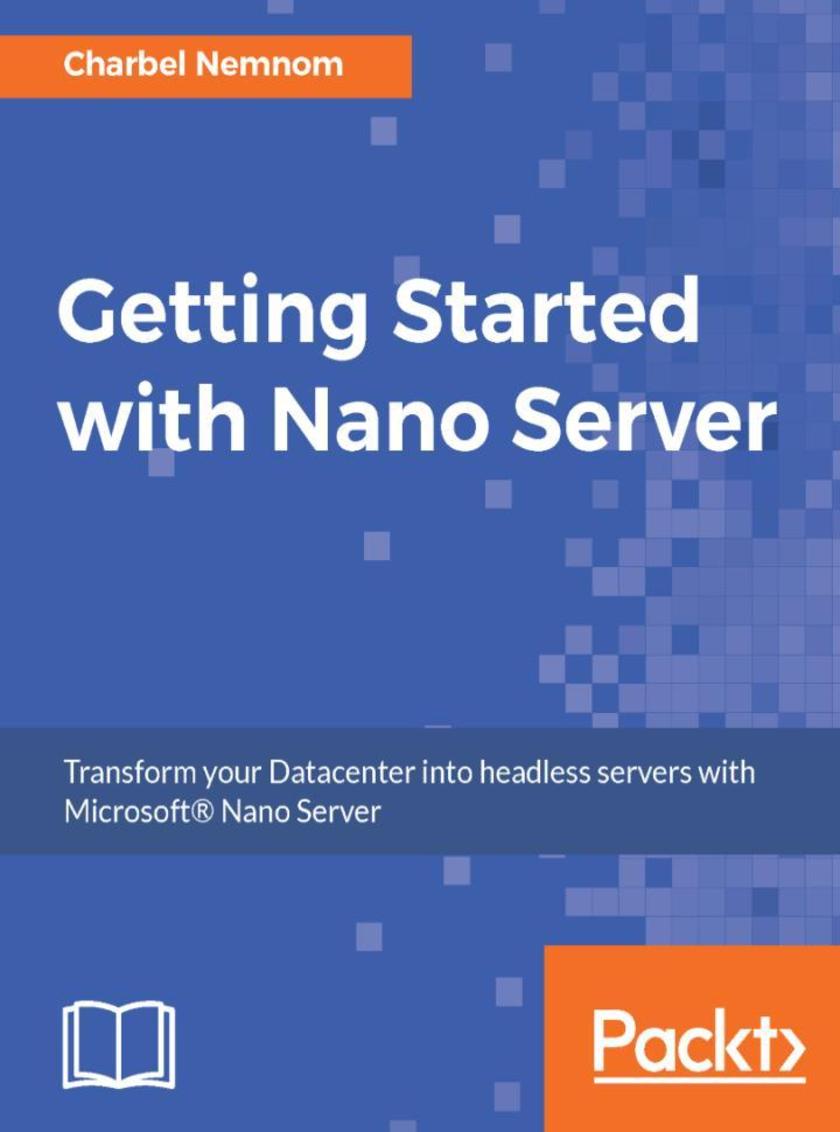
Getting Started with Nano Server
¥80.65
Remain highly competitive in the server and VM market by gaining the practical skills needed to operate Nano Server About This Book ? The days of the local server are numbered, and this book will make you an ace by giving you the skills needed to administer Nano Server and survive in the brave new server world ? Learn to quickly automate multiple VMs and support Hyper-V clusters, all through small footprints from a single host ? Apply up-to-date, real-world examples presented in this book and improve the scalability and efficiency of large-scale VM deployments Who This Book Is For This book opens up new potential for both developers and IT pros alike. The book is primarily for Server administrators and IT Professionals who would like to deploy and administer Nano Server within their organizations, and for developers who are trying to make maximal use of Server Containers and Hyper-V Containers with Nano Servers. What You Will Learn ? Understand Nano Server ? Deploy Nano Server ? Deploy Hyper-V Clusters on Nano Server ? Deploy Nano Server with SCVMM ? Manage Nano Server using PowerShell and Remote Server Management Tools ? Manage Nano Server with third-party tools ? Run Server Containers and Hyper-V Containers on Nano Server ? Troubleshoot Nano Server ? Validate developed applications that run on Nano Server In Detail Nano Server allows developers and operations teams to work closely together and use containers that package applications so that the entire platform works as one. The aim of Nano Server is to help applications run the way they are intended to. It can be used to run and deploy infrastructures (acting as a compute host, storage host, container, or VM guest operating system) without consuming significant resources. Although Nano Server isn't intended to replace Server 2016 or 2012 R2, it will be an attractive choice for developers and IT teams. Want to improve your ability to deploy a new VM and install and deploy container apps within minutes? You have come to the right place! The objective of this book is to get you started with Nano Server successfully. The journey is quite exciting, since we are introducing you to a cutting-edge technology that will revolutionize today's datacenters. We'll cover everything from the basic to advanced topics. You'll discover a lot of added value from using Nano Server, such as hundreds of VM types on a single host through a small footprint, which could be a big plus for you and your company. After reading this book, you will have the necessary skills to start your journey effectively using Nano Server. Style and approach Gauge all the information needed to get up-and-running with the latest Nano Server built by Microsoft using this easy to follow step-by-step guide.
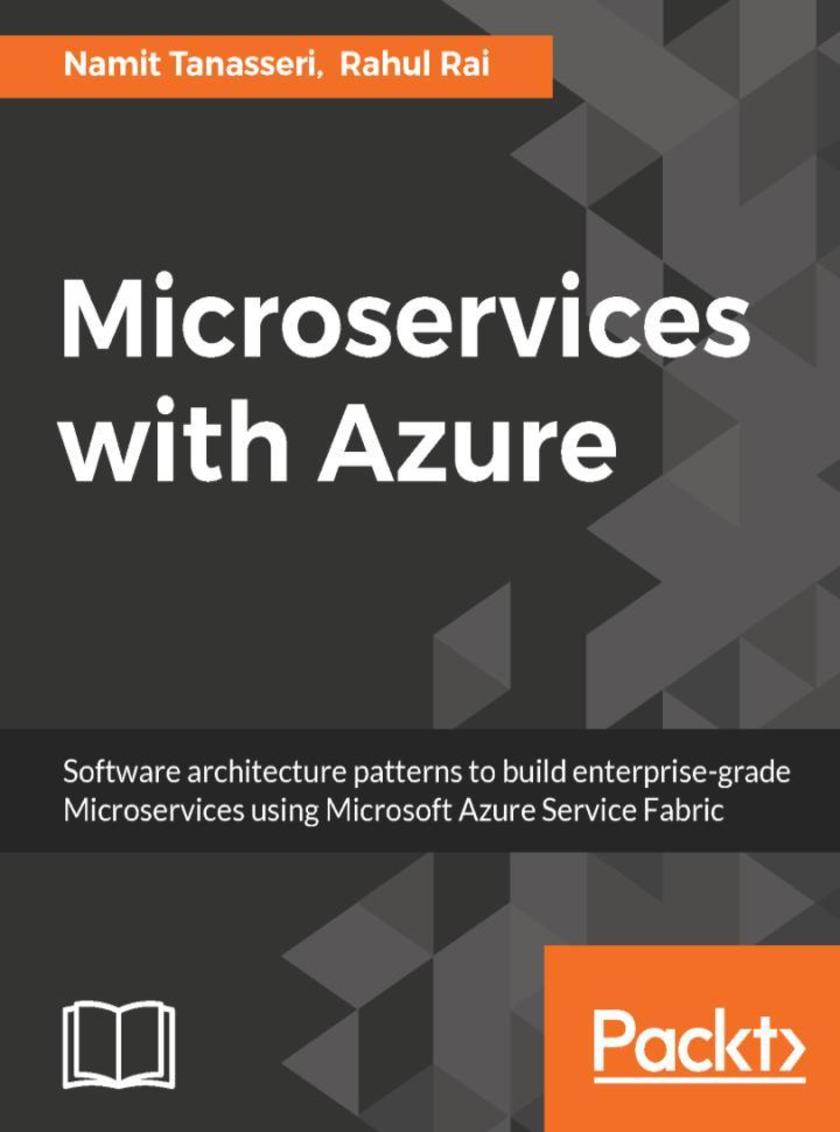
Microservices with Azure
¥80.65
Architect enterprise-grade, Microservice-based solutions using Microsoft Azure Service Fabric. About This Book ? Explore architectural patterns for building modern day Microservice-based systems ? Learn about Microsoft Service Fabric as a platform to host distributed Microservices ? Discover multiple options for hosting Microservices on heterogeneous, cross-platform environments ? Learn to configure Azure Service Fabric clusters for enterprise-grade service deployments Who This Book Is For The book is aimed at IT architects, system administrators, and DevOps engineers who have a basic knowledge of the Microsoft Azure platform and are working on, or are curious about, the concepts of Microservices and Microservice architecture. What You Will Learn ? Understand the basics of Microservices and how Microsoft Azure fits into the equation ? Master Azure Service Fabric architecture and services ? Explore Azure Service Fabric application programming models ? Comprehensive study of various architecture patterns for building enterprise-grade Microservices ? Manage and deploy Microservices on Azure Service Fabric ? An insight into the future of Microservices with containers and serverless computing In Detail Microsoft Azure is rapidly evolving and is widely used as a platform on which you can build Microservices that can be deployed on-premise and on-cloud heterogeneous environments through Microsoft Azure Service Fabric. This book will help you understand the concepts of Microservice application architecture and build highly maintainable and scalable enterprise-grade applications using the various services in Microsoft Azure Service Fabric. We will begin by understanding the intricacies of the Microservices architecture and its advantages over the monolithic architecture and Service Oriented Architecture (SOA) principles. We will present various scenarios where Microservices should be used and walk you through the architectures of Microservice-based applications. Next, you will take an in-depth look at Microsoft Azure Service Fabric, which is the best–in-class platform for building Microservices. You will explore how to develop and deploy sample applications on Microsoft Azure Service Fabric to gain a thorough understanding of it. Building Microservice-based application is complicated. Therefore, we will take you through several design patterns that solve the various challenges associated with realizing the Microservices architecture in enterprise applications. Each pattern will be clearly illustrated with examples that you can keep referring to when designing applications. Finally, you will be introduced to advanced topics such as Serverless computing and DevOps using Service Fabric, to help you undertake your next venture with confidence. Style and approach This book introduces its readers to the concept of Microservices and Microsoft Azure Service Fabric as a distributed platform to host enterprise-grade Microservices. It then addresses common architectural challenges associated with the Microservice architecture, using proven architectural patterns.




 购物车
购物车 个人中心
个人中心



